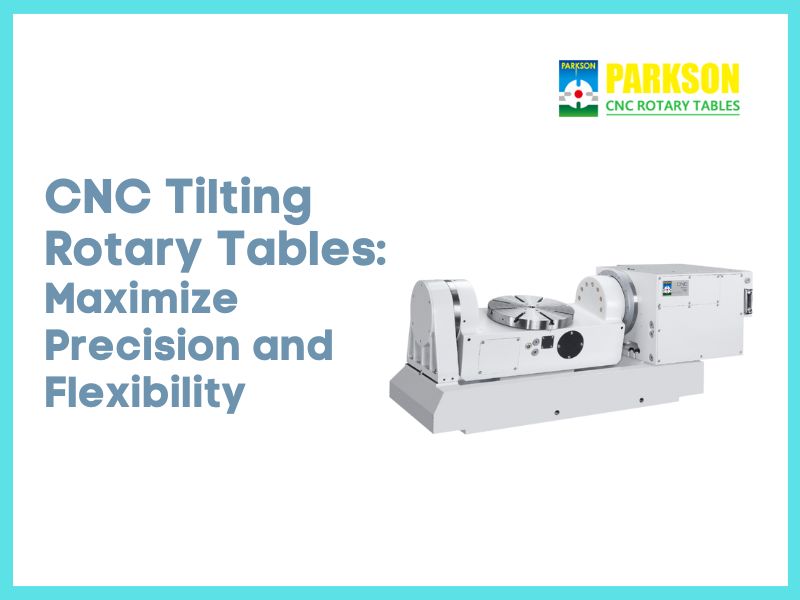
In today's competitive manufacturing environment, CNC tilting rotary tables have become essential for achieving high precision and flexibility. For companies looking to efficiently produce complex components, these tables are a powerful solution. This article explores how CNC tilting rotary tables enhance machining, the key benefits they offer, and the most important factors to consider when selecting one.
What is a CNC Tilting Rotary Table?
A CNC tilting rotary table is an accessory used in CNC machining that allows the workpiece to be rotated and tilted simultaneously. This combination enables multi-axis machining, facilitating the production of complex parts with fewer setups. The tilting feature, usually covering a range from 0 to 90 degrees, provides better access to multiple sides of the workpiece, making it ideal for applications that require intricate designs, such as in aerospace, automotive, and medical manufacturing.
Key Benefits of CNC Tilting Rotary Tables
1. Enhanced Precision
Tilting rotary tables allow machines to access hard-to-reach angles, reducing repositioning and increasing accuracy. This helps maintain tight tolerances essential for industries focused on high precision.
2. Increased Flexibility
CNC tilting rotary tables make it easy to handle complex parts without multiple setups. This flexibility saves time, enabling production of parts with varied shapes and sizes, and makes the table ideal for custom machining applications.
3. Reduction in Production Time
The ability to machine multiple sides of a part in a single setup reduces the need for re-clamping and improves workflow efficiency, cutting down on production time and cost.
4. Improved Surface Quality
By allowing for smoother transitions during cutting, CNC tilting rotary tables reduce the risk of surface imperfections, producing higher-quality finishes that are critical for products with aesthetic and functional requirements.
Key Considerations When Choosing a CNC Tilting Rotary Table
When selecting a CNC tilting rotary table, certain factors can significantly impact your production outcomes. Here's what to consider:
1. Tilt Range and Axis Flexibility
Different tables offer varying tilt ranges, typically between 0 and 90 degrees. Assess whether the table's flexibility aligns with your production needs, especially if your parts require complex angles.
2. Load Capacity and Stability
Stability is crucial for heavy-duty applications. Ensure the table can support your parts' weight without compromising accuracy. Stability reduces vibrations, improving precision and extending the life of your cutting tools.
3. Precision and Repeatability
Precision and repeatability are essential for industries with strict tolerances. Look for specifications related to accuracy and repeatability, as well as features like high-quality encoders that ensure consistent precision.
4. Ease of Integration with CNC Systems
Compatibility with your CNC system ensures seamless operation. Plug-and-play tables minimize setup time and streamline installation, reducing operator training time and helping you get started more quickly.
5. Maintenance Requirements
Low-maintenance tables ensure consistency in production schedules. Look for features that enhance durability, such as protective seals and high-quality materials, to avoid frequent breakdowns or downtime.
6. Safety Features
Safety is vital in any machining environment. Check for features like emergency stop functions, overload protection, and automatic locking mechanisms to protect both operators and equipment.
7. Cost-Benefit Analysis
Weigh the initial costs of a CNC tilting rotary table against the potential gains. Higher upfront costs can often be justified by gains in efficiency, reduced setup times, and fewer errors. Conduct a cost-benefit analysis to assess how quickly the table can pay for itself based on your specific production needs.
How PARKSON's CNC Tilting Rotary Tables Stand Out
PARKSON's CNC tilting rotary tables are engineered with precision and durability in mind, designed to meet the rigorous demands of high-precision applications. Each table undergoes stringent quality checks to ensure reliability and consistent performance. PARKSON's advanced double worm drive systems enable smooth tilting motion and precise positioning, making these tables ideal for various industries.
PARKSON also offers customization options, allowing manufacturers to select tables that meet specific machine requirements. Whether used for high-speed milling, multi-axis drilling, or intricate cutting tasks, PARKSON's CNC tilting rotary tables provide reliable solutions that help manufacturers enhance their production capabilities.
Conclusion: Elevate Your Machining Precision with CNC Tilting Rotary Tables
CNC tilting rotary tables are a valuable investment for manufacturers looking to boost precision, flexibility, and productivity. By enabling multi-angle machining in a single setup, these tables reduce production times and enhance output quality. For manufacturers seeking to elevate their machining capabilities, a high-quality CNC tilting rotary table can lead to significant improvements in efficiency and product quality.
Contact PARKSON today to learn more about how our CNC tilting rotary tables can transform your production process and help you achieve new levels of precision and performance.

